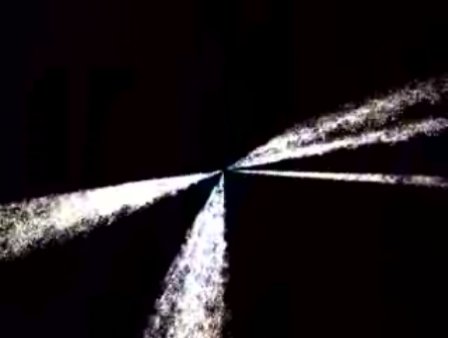Mapping The Universe: Sloan Digital Sky Survey (SDSS 2)

update 22.02.2011: the above image is a still from the below referenced film.
From the SDSS homepage:
SDSS is systematically mapping a quarter of the entire sky, producing a detailed image of it and determining the positions and absolute brightnesses of more than 100 million celestial objects. It is also measuring the distances to a million of the nearest galaxies, giving us a three-dimensional picture of the universe through a volume one hundred times larger than that explored to date. SDSS is also recording the distances to 100,000 quasars — the most distant objects known — giving us unprecedented knowledge of the distribution of matter to the edge of the visible universe.
February 20th, 2011 at 11:50 am
Aren’t you a physicist? Can’t you write a bit more on the scientific background? What further investigations and findings are there going to be? There is so much interesting things going on in astronomy! Too exhausted? Whatsoever – I am asking myself – why is the MIT Sloan school suddenly interested in astronomy? Maybe because of astronomical prices?
February 21st, 2011 at 1:08 pm
Silvia Says:
February 20th, 2011 at 11:50 am e: Aren’t you a physicist? …
I am no specialist for astronomy so writing about astrophysics would be indeed an extra effort. In the above post I was mentioning the above resource mostly as an example of science visualization. Here is a similar post (http://www.randform.org/blog/?p=979)
If you are interested in astrophysics – there are excellent blogs out there! Like if you speak german then astrophysicist Alex Scholz of Riesenmaschine (not to confuse with Olaf Scholz of the recent Bwürgermeisterwahl (http://www.spiegel.de/politik/deutschland/0,1518,746691,00.html ) in Hamburg) is presenting astrophysics in a charming story kind of mash-up. (see e.g. here: http://riesenmaschine.de/index.html?nr=20100609152533 ). If you are especially interested in astronomy then eventually Sarah Kendrew’s blog (http://sarahaskew.net ) might be for you.
It is not the MIT Sloan School which is interested in astronomy but the Alfred P. Sloan foundation (http://en.wikipedia.org/wiki/Alfred_P._Sloan_Foundation) The Sloan foundation has donated money to the MIT Sloan school, as well as it supported the above CDSS. That may explain the words.